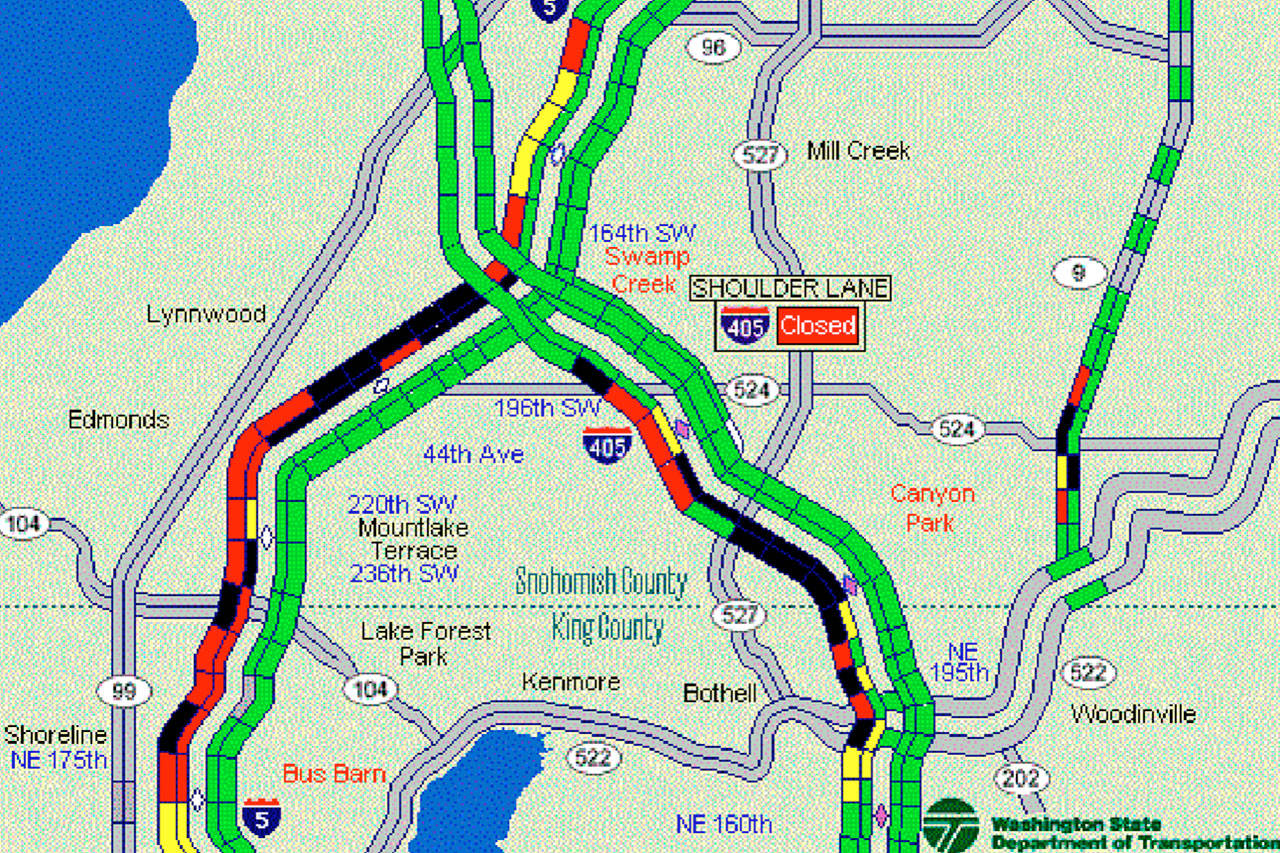EVERETT — Our region is facing “historically long commute times,” according to a new report.
The Washington State Department of Transportation on Wednesday released the 2017 edition of its Corridor Capacity Report, also called the Congestion Report.
Like past years, the report shows that congestion is pretty darn bad and continues to get worse.
The economy is up. Gas prices are down. And more and more people are moving to the area, especially in spots like Snohomish County, where homebuyers search for prices they can afford.
“Congestion is part of a booming economy,” said Sreenath Gangula, a WSDOT analyst and a lead author of the report. “It points to the need for commuters to consider alternatives to driving alone to work.”
The report frames the traffic discussion in a variety of targeted statistical ways — such as the Everett-to-Seattle commute on I-5, where commuters now have to budget more than 90 minutes to reliably get to work on time every morning. (And that doesn’t include the time it takes for many Snohomish County drivers to get to I-5 in the first place.)
In all, congestion on the central Puget Sound region’s major roads is up by more than 22 percent over the past two years, the report finds. Drivers combined to tally a new high of 60.8 billion miles in 2016.
Transit use is on the rise. The number of people boarding buses, trains or ferries has grown faster than in any other large metropolitan area in the nation. And the Puget Sound region is considered “the vanpool capital of the nation.”
But more people continue to drive alone, too.
Rates remained relatively steady for drive-alone commuting (72 percent), carpooling (10 percent) and transit riding (6 percent).
A closer look at I-5
I-5 accounts for 58 percent of the region’s traffic delays, as measured by the report. I-5 saw more hours of delay than the other four monitored freeways combined.
The Everett-to-Seattle morning commute was up 4 minutes in 2016 to 56 minutes in the general purpose lanes. The reliable travel time — which accounts for the longer commutes behind that average — was up 11 minutes to more than an hour and a half.
By contrast, high-occupancy vehicle (HOV) lane drivers saw little change in the morning. The average HOV commute was just over 45 minutes, and at 75 minutes for a reliable time.
For the evening slog home, the average commute time rose 8 minutes to 52 minutes for general purpose lane traffic.
The most significant of the I-5 traffic increases was southbound at SeaTac, northbound at the I-90 interchange, and in both directions at Northgate.
Carpool lanes certainly help — but they’re pretty full, too.
The goal in HOV lanes is to move traffic through at least 45 mph, 90 percent of the time during peak hours. From Everett to Seattle on I-5, that goal was only met 19 percent of the time southbound for the morning commute and 21 percent northbound for the evening commute.
Buses are considered a prime way to move more people per square foot of pavement — and they have room. Less than 70 percent of seats are filled on Everett-Seattle routes at peak commute times.
Elsewhere in the region, the delay increased 8.2 percent on I-405 between Tukwila and Lynnwood. One of the problem areas was Bothell.
Park-and-ride lots continue to be at or over capacity at the Ash Way Park and Ride in Lynnwood, Lynnwood Transit Center, the South Everett Freeway Station, and the Mountlake Terrace Park and Ride.
Cost of congestion
All these delays come with costs, including wasted time and gas.
For 2016, WSDOT puts that figure at $3,100 per vehicle.
Congestion means workers as well as roads are less productive and efficient.
Among Snohomish County workers, 13.9 percent now have commutes of at least one hour — up from 11.7 percent in 2009, according to U.S. Census estimates. Many are leaving earlier to account for delays, with 21.5 percent of county workers now leaving before 6 a.m. to get to work.
While fewer county workers carpool than seven years ago — 11.2 percent in 2016 compared to 13.1 percent in 2009 — more are working from home. The work-from-home rate was at 5.1 percent for 2016, up from 4.6 percent in 2009.
Alternatives to driving alone to work, including working from home, are key for moving forward, the WSDOT report finds.
Results Washington sets a statewide goal of 29 percent of workers using alternative commute methods by 2020. So far, it’s falling short of that goal.
This year’s Congestion Report included a special look at the accessibility of jobs.
Access to jobs was greatest for folks who lived in urban King County, with Bellevue getting the best marks. A person living in Bellevue has access to roughly 1.3 million jobs within a 30-minute commute at average speeds.
The lowest level of accessibility was in rural Snohomish County.
Add in what it takes to reliably get to work on time — not just the average — and the picture gets worse for those living at the edges, including areas just north of Everett.
Highlights
Find an interactive map of the Congestion Report at bit.ly/agolCCR17 statewidemap.
Talk to us
> Give us your news tips.
> Send us a letter to the editor.
> More Herald contact information.

























